Podcast: Play in new window | Download
Show Notes
Check out my high tech mobile recording studio! Hear me talk about it on the show today.

Today, I weigh the pros and cons of native plants and exotic plants for your landscape and gardens. Does all this even matter for your landscape? Listen in to figure out where you stand and whether it can help you save time in your landscape.
Natives & Exotics
- Wide array of opinions – emotion, ecology, sensation, experience
- Why important? What is context?
- Environmental
- Plants
- Insects
- Historical
- Exotic = refined
- Emotional
- Native = normal, plain
- Environmental
- What is a native?
- Many definitions
- Generally considered plants that existed in ecosystem in 1491
- Exotics
- Advantages
- Beauty
- Diversity
- More variety
- Exotic
- Disadvantages
- Potentially harmful
- Less ecosystem benefit
- May require more maintenance
- Advantages
- Natives
- Advantages
- Resilience
- Beauty
- Regional/Local Character – sense of place
- Habitat
- Disadvantages
- Can feel plain/normal
- Less variety
- Advantages
- My personal take
- Natives first, but not exclusive
- Enhance landscape with habitat and beauty
- Pollinator benefit
- Hardy, appropriate
- Non-aggressive & dispersive exotics
- Time-tested
- Non-dispersive
- hardy
- Planting something is better than nothing
- Exotics can provide benefits, with caution
- Do not use invasive/dispersive/suppresive plants
- Natives first, but not exclusive
- Your personal take
- What do you value?
- What type of design style do you prefer?
- Can native plants provide a desired outcome
- Does more knowledge help?
- Native plants podcast https://www.nativeplantpodcast.com/
- Nurseries
Links for today’s episode:
I’m Ben Hale your virtual design guide
to help you and your family have a
healthy beautiful landscape with less
work what’s up and welcome to episode 17
of the aesthetic ecosystems podcast I’m
so glad you guys are here today to talk
about natives and exotics that’s right
in the especially in the more naturally
minded or ecologically minded space this
is a very hot and heavy topic and it’s
starting to percolate into landscape
design as well and maybe this is
something you’re interested in and
trying to understand what do native
plants have to offer and and why is the
whole natives and exotics thing such a
big deal to some people anyway so we’re
gonna kind of dig into that today and
try to understand a bit more about it
and also what it means to you in your
landscape before we do that though I
just wanted to share a little snippet I
know last episode there was there was a
little bit of background noise and stuff
and and here’s just kind of a fun tidbit
for you guys I’m I actually my recording
studio my high-tech recording studio for
this podcast is the best quiet
environment I can find away from work
away from home where you know it’s it’s
actually kind of pretty noisy at home
usually with our little guys running
around and stuff and there’s there’s not
very many private spaces for me to
record this podcast I don’t have things
set up where I have you know an office
space yet or anything for my business
it’s it’s mostly a digital business so I
can run most of the business from my
home but with this being a new podcast
you know this is kind of a throws a
little bit of a wrench in to think so
what I do is I actually record this
podcast in my car that I use to commute
to work every day so there’s there’s a
funny little tidbit about this podcast
for you is this is a a car recorded
podcast they ought to Auto podcast I
guess so don’t worry though I’m
stationary in the vehicle I’m not
driving somewhere right now
so I can give full focus and attention
on the podcast but what I do is I
actually usually I’m actually sitting in
the parking lot at my my full-time day
job and there’s a there’s a beautiful
view there so here you can keep your car
going by right now through the park
parking lot and it’s a little weird I
get some funny looks sometimes but I’m
glad you guys enjoy listening to me
maybe my coworkers don’t find this
situation quite as appealing but it’s a
beautiful view outside and and I get to
you know watch the birds fly by and the
wind blow through the plants and stuff
as as I record this podcast so it makes
it quite an enjoyable experience as
opposed to maybe a less enjoyable
experience hidden in some boxed-in
office or something so anyway with that
what I wanted to say is is that
especially with the weather warming up
and you know this car is like a sauna
and so I’ve been cracking the windows up
and at the windows enjoying the breeze
but unfortunately with that there’s some
more noise that happens too so so last
episode I actually had to pause the
recording a couple times because this
helicopter kept flying over and there
was no way I could record with this this
noisy helicopter coming over so I guess
with the warmer weather I’ll be dealing
with that more it was quite comfortable
in the cooler times when the Sun you
know was shining enough on the vehicle
enough to keep it nice and nice and
comfortable inside but now it’s it’s not
so comfortable so anyway enough about
that you know you got your laughs for
today I’m I’m quite comfortable with a
little bit of self-deprecating humor in
order to make people’s days more
enjoyable so you’re welcome all right so
natives and exotics really with with
natives and exotics so what we’re
talking about here is is plants that are
generally considered indigenous or
native to a certain space and and for
the sake of this podcast I’m gonna be
talking about North American natives
primarily in the continental US is what
I’m talking about there’s a lot of
carryover you know if you know into
Canada and even into Mexico with plants
that are native in
the US and actually there’s certain
plants too that are globally relevant
but for the sake of this podcast we’re
going to be talking primarily about
continental US plants when I’m referring
to natives and for those of you that
listen internationally the same
principles apply here and you can kind
of ask yourself the same stuff for for
your region that you live in as well and
and what this means to you so when it
comes to natives there is a huge wide
array of opinions about this whether or
not natives are important especially in
landscape design whether it’s okay to
use exotics in your design and what
types of exotic plants you can use so
exotic means that they’re not
necessarily considered native to your
area so they might be from another
continent or another region or across a
mountain range or something like that
and so what’s native to Ohio where I
live might not be considered native to
southern Texas or to California and
sometimes for good reasons sometimes
just due to geographical separation so
there’s a lot of levels to this whole
debate and we’re not going to get into
that deep stuff and to talk about
semantics if you’re interested I will
provide some other resource for you as
well
at the end of the show but you know what
ties into these opinions is a lot of
emotion for one but also a lot of
ecology and environmental understanding
a lot of sensation as well and I’ll also
just experience with certain things in
the past so there have been plants and
Pat in the past we’re gonna focus on
plants here there’s a ton of other you
know ignatiev and exotic debates as well
with insects and and that sort of thing
but here we’re just talking about the
plants and experience with invasive
species right you may have heard that
term and what does that term mean so
that’s kind of where all these opinions
come from when we’re talking about
natives and you may be wondering why is
this important or is is it important
right and and what is the context around
this so as far as the context importance
I guess to step back import
I’m actually gonna leave this up to you
guys the listener you know for you
personally I’m not the one to judge
whether or not this is important to you
instead I just want to inform you of the
background here and to leave you up to
make your own conclusion also share what
my thoughts are towards the end of the
show as well in case you want them but
but really this boils down to what’s
important to you but for the general
trend here I guess of of natives and
exotics or whatever the general
perspective here is that what’s the
context so let’s kind of get into the
context as opposed to questioning
whether or not it’s important leave that
towards the end of the show so from an
environmental standpoint there’s a lot
of context that goes into influencing
whether natives or exotics are preferred
or important and one is their their
relationship with other plants how do
they interact with other plants in the
native landscape so or the that I guess
the wild landscape is a better term for
it so the un– I guess uncultured
landscape or the the non design
landscape how do how – how does your
plant that you’re considering interact
with that whether it’s a native you know
a so-called native or an exotic plant
and that’s important likewise how does
it interact with the insects or the soil
microbiology of your area there there’s
a lot of interaction between insects and
other animals birds for example it’s
very important to consider that as well
because when you’re dealing with certain
plants they attract certain insects or
or birds that may be native to your
region whereas exotics may not and so
understanding that can influence your
designs there’s also a lot of historical
context here so generally speaking in
the past up till the recent past and
even now I would say – not this isn’t an
absent feeling but but that exotic kind
of means a more refined taste right if
you have access to something exotic you
have access to something that
is different as unique and comes from
far away so it’s it’s cooler right it
has the coolness effect I guess is the
this is a good way to say it and and
likewise there’s also some emotional
context as well for example native can
mean that it’s you know you have
something that’s kind of plain or normal
and it’s not as exciting potentially so
there’s a lot of a lot of factors that
go into why we have this appeal to
native landscapes or we have this appeal
to exotic landscapes and what goes into
feeding that that feeling or belief or a
tendency and it kind of goes both ways
as well there’s also principles that
people have that that you know determine
what kind of plants they prefer as well
so there’s just I just want to point out
there’s a lot of context behind this and
and I want us to kind of all try and
shed that context as we have this
discussion just to kind of have a more
unbiased perspective going in or maybe
you’ve you know maybe your perspective
is from from other people or hearing
other things and I want us to really
take a step back and just try and
understand things a bit more before we
kind of go in further so of course
before we really have a discussion about
characteristics of exotic plants and
characteristics of native plants we have
to define what what is native what does
that actually mean right if you take for
example Native Americans right people
some people prefer different terms for
the for the the local indigenous
population that lived here in the United
States before 1492 and and whether or
not a certain term is the right term and
also what that term relates to is it the
the the people that lived here in 1491
and earlier or is it the people that
lived from say the your you know the
year 1000 up to 1491 and or is it the
people that lived from 1492 up to now
present time so there’s a lot of context
for example in that
discussion that determines you know that
changes with definition based on the
discussion you’re having and so likewise
with natives as well when we’re talking
about plants and for the sake of this
discussion I will say there’s there are
tons and tons of definitions here and
and tons of varying opinion some people
consider for example the gingko tree you
may have heard about gingko in say your
energy drinks that you might hear of or
imbibe yourself but a gingko is it was
native to a I guess locally populated
and across much of the u.s. in
prehistoric times but that was a
significant time period ago you know and
now it’s not considered I guess locally
indigenous is a term all use and so does
that mean it’s a native or not and
depending upon the person you talk to
they will agree or disagree whether or
not that’s considered a native so for
the context here in today’s show what
I’m going to do is is it’s kind of the
mainstream opinion is that native plants
for the sake of this discussion our
plants that existed in the ecosystem
within the continental US in the year
fourteen ninety one and so if you think
about 1491 why I’ve brought up that date
a couple times is in 1492 Columbus
sailed the ocean blue that’s basically a
member of US history class so don’t ask
me to quote anything else but but that
little rhyme reminds us that that’s when
European settlers first started
discovering and settling the United
States region and that with that came a
lot of changes in the the population
here in the United States as well as the
landscape and the ecosystems and so one
of those changes was was native plants
and and also just plants in general so
for example there’s a common weed across
the eastern United States called
plantain not to be confused with the
benign
thing from more southerly regions but
plantain is actually a it’s a it’s a
small herbaceous read that is a
perennial so it comes back after a
couple years and this this weed or what
people call a weed generally speaking at
the time was actually dubbed white man’s
footprint by a Native Americans because
it wherever the European settlers kind
of disrupted the ecosystem by clearing
the place out for farmland and for for
housing and that sort of thing these
little plants would pop up everywhere
well these little plants the plantain
plants they’re native to Europe not to
United States and so it’s just an
example that things really change
significantly after that date and so
what’s considered native to a lot of
people is considered what was here in
the United States before European
settlement okay so we could go on
actually for hours and hours and hours
about a lot of this stuff and to be
honest I actually don’t enjoy all those
conversations because like I said
earlier there’s a lot of emotion and
sensation into it I like to prefer to
look at things from a more contextual
standpoint of the ecology in the science
or just facts and and also plant
relationships there’s a lot that’s known
but also a lot that’s unknown about
plant or relationships and how do
certain plants affect those
relationships and so that’s for another
time today I just kind of want to give
us a an overview of this whole natives
and exotic plant things and what it
means to you so now that we’ve got that
clear in and just for anybody out there
who has a different opinion that’s
totally fine that’s just for the sake of
this discussion today and so if you have
other opinions to share about this show
or other thoughts to share about this
show head on over to aesthetic
ecosystems calm slash episode 17 so
episode one seven and that’ll take you
to the webpage for this show and and
leave a comment in the comment section
let’s have a discussion about this let’s
have an open discussion about this and
try and you know stay past the emotional
piece or the sensational piece and just
trying to have a pragmatic discussion
and let’s acknowledge to that there are
a wide variety of opinions here and
that’s okay with any sort of issues is
that it’s okay to have various opinions
and to respect other people’s opinions
about it too so for the sake of this
show let’s just go with that definition
and and move forward into understanding
more about these plants okay so what I’m
gonna do now is talk about the advantage
and disadvantages of exotic plants what
they have to offer and then follow up
with advantages and disadvantages of
native plants and then we’ll kind of
wrap up the show after that with a
another follow-up which is my personal
take or my personal view and then trying
to help you understand what’s your
personal take on all this what how do
you feel about this and then how can it
influence your your landscape design
processes and and how does this all
influence what you want with a
low-maintenance landscape that’s
actually really important too so that’s
kind of how we’re gonna go through the
rest of this show so exotic plants what
are the advantages that exotic plants
have to offer why you know why do why
isn’t everybody just sit like natives
only person right what what makes people
want to use exotic plants in the
landscape so first and foremost a lot of
exotic plants offer a lot of beauty you
know they there’s plants from all over
the world that’s the advantage of a
global society right we we’ve discovered
all these different regions and pockets
of the world and and with that we found
all these different beautiful plants
that we can bring into our landscape and
and enjoy the beauty of these plants
within our own backyard and and that’s
one of the big things for exotics is
they we’ve we’ve selected certain and
not me personally but we as a as a
species that guess as humans have
selected these different plants and
sometimes also selectively bred these
plants to have certain characteristics
that we find appealing
in our landscapes and that’s why they’re
there so that’s the first big thing
it’s a really big thing secondly there’s
a huge diversity of selection exotic
plants you know there’s all different
varieties different types from all over
the world and also adapted to a wide
variety of different soil types and just
ecosystems in general and bringing those
into our landscapes give us a wider
palette of selection so so that’s
something to be said as well there’s
more variety with that diversity piece
you know you have a lot more variety to
choose from and so much sometimes that
it can be overwhelming like totally
overwhelming right and even just within
one species of plant one type of plant
you have all these different varieties
potentially that have been selectively
bred for size for shape for color for
balloon color for bloom timing I just
take the apple tree for example as an
example with the edible that first of
all that’s considered a non-native plant
it’s native to you know the the middle
eastern regions and and like Western
Asia as well and but the apple tree has
been with humans for for ages and ages
and throughout that there’s thousands of
varieties of different types of apples
that you can select for and each each
variety has its own unique
characteristics and so the same goes for
a lot of these different plants with
exotic plants especially because there’s
just so many of them and in the last
piece in the name itself they’re exotic
they’re different they’re they’re from
another place and sometimes you know
people want that something that that
feels so foreign but we can bring it
into our landscape it kind of has a
sense of convenience or even power or or
just uniqueness you know it’s the whole
feel of having something exotic in your
own landscape so those are all
advantages that come into the having an
exotic plant in your landscape now let’s
talk about some of the disadvantages so
with exotic plants that can be
potentially harmful for our local
landscapes for one they have they can
have a tendency to take over sometimes
or to bring various diseases into the
area
or to impact the local native
populations of different insects or
animals and so these are all things you
have to consider when you’re actually
considering a native or excuse me an
exotic plant so it’s really good if
you’re choosing you know an exotic plant
to consider whether or not it has any of
these known negative effects sometimes
there’s effects that we might not even
know which a lot of times with these
plants we bring these plants into our
landscapes and we find out later that
there’s a whole the whole sudden there’s
this trend of this one plant that was
thought to be good you know so called
good or okay to have in the landscape it
has some sort of unexpected negative
effects and so there’s always risk or a
chance that an exotic plant could be
potentially harmful to your local
ecosystem and so it’s just something to
keep in mind and it’s in the next piece
to is that in generally or in general
exotic plants have less of an ecosystem
benefit so this is if this is something
that matters to you that’s something
important to consider so what I mean
here is that when when we have an exotic
plant its native to somewhere else right
it came from somewhere else let’s say
there’s a plant that is originally from
from Japan right
so that plant has evolved over thousands
upon thousands of years with that local
ecosystem so there’s certain bacteria
and fungi and and crustaceans and
insects that developed in symbiotic
relationships potentially or competitive
relationships with that plant to either
help it or to keep it in check from
being able to spread widely and and
similarly it also evolved with other
plants that may have a beneficial effect
or a competitive effect with that plant
and so when you remove that singular
plant from its it’s developed landscape
you risk putting it in place where it
has less of a benefit
on the local population of plants of
microbes of insects of birds and of all
various other creatures so I think you
understand what I’m trying to say there
is is that there’s it’s kind of like
taking a piece out of a puzzle and
trying to fit it into another puzzle
somewhat so there’s sometimes you know
that there’s sometimes services and
benefits that the plant can provide in a
new ecosystem if there’s a very similar
plant that already exists in the space
but there’s always that risk of it
doesn’t have a positive impact on the
landscape as much as it did say where it
came from and like wise the plant may
require more maintenance to either keep
it having the right amount of fertility
it needs or to keep pests at bay because
it’s less well adapted to the pests in
the new space or to keep it in check
from either spreading or growing
profusely these are all things that you
know may be required with your exotic
plant so just things to consider there
okay enough said about exotics now let’s
move on to natives and trying to
understand what are the advantages of
natives and what are the disadvantages
of natives so the first thing is in
general these are all broad
generalizations right so in general with
native plants the first thing you get is
resilience so native plants assuming
that it’s actually locally indigenous to
your local area native plants are
generally better adapted to the region
so this means the the weather extremes
the weather anomalies the local soils
the local plants competition and animal
and insect competition the any symbiotic
relationships that may exist with any
animals or soil microbes as well so all
of these things bundled together
generally lead to more resilience of the
plant that you’re considering when it’s
a native this is not always true but
that’s generally more the case than with
exotics another advantage is you you do
have beauty with naked
of plants so I think a lot of times
native plants get a bad rap for just
being kind of ugly or be you know
grasses but look at the success of the
purple coneflower you may have the
purple coneflower in your landscape
already but this is a plant that’s
native to the north american prairie and
here it is now in tons of landscapes
within the past you know 15 to 20 years
it’s become incredibly popular to where
most people’s landscapes now have purple
coneflower in their landscape and it’s a
beautiful plant and it’s very well
adapted to the space and so it does
incredibly well just taking care of
itself which is again what we’re looking
for here with with low-maintenance
landscapes so sometimes natives have
beauty and they also have the resilience
that that is a huge advantage
so next native plants hat here’s another
car coming by with my parking lot
podcasts so you’re welcome for the
beautiful background soundtrack
hopefully we get a few birds in here I
think there was a there was a kill deer
here earlier I don’t know if you heard
it chirping outside the car but it was
kind of chilling out listening to the
podcast with you guys so yeah we get
Birds listening to that’s pretty cool
anyway so back to natives is another
advantage of natives is you get regional
and local character you get a sense of
place and this is a huge thing with
design whether it’s architecture or
whether it’s interior design or
landscape design sense of place or sense
of self is very important and then
likewise natives can really provide a
sense of local adaptation right a sense
of local place so it makes it’s what
makes you know Ohio different than
southern Texas to use the previous
example what makes southern Texas
different than then the coastal
California right these are all very
different places and so kind of
embracing embracing and and what am I
trying to say here so like yeah
embracing that local feel and and
promoting it right showcasing it that’s
the word I think I was looking for
showcasing that local sense of place and
how we are different than other regions
and welcome to our region this is what
we have to offer this is what our plants
have to offer so that is a you know a
big thing for natives is that regional
and local character if it’s properly
designed in a beautiful way right taking
the best pieces of the native local
landscape and using it in a way that’s
structurally and visually appealing and
and and showcasing it to the rest of the
world
that’s really cool the next piece
advantage of natives and this isn’t
important to everyone but it’s a very
important to several peat and you know
to many people and that’s habitat so not
only does your plant look beautiful or
your plants or your landscape look
beautiful but it also provides a healthy
habitat for not just your family but for
the local populations of of animals and
and creatures that come through your
landscape and makes them want to come
through your landscape in a way that’s
healthy and beneficial as opposed to
being a nuisance and so providing good
habitat is very important to some people
and and even if it’s not important to
you maybe it’s something you’re
indifferent to and that’s it might be a
good thing so a lot of times native
plants are generally better adapted at
providing good habitat for the local
native creatures as opposed to exotic
plants and so that’s something that is a
huge advantage for native plants so
let’s talk about the potential
disadvantages of natives so when it
comes to native plants the primary
disadvantages I can think of for one a
lot of people can potentially find them
native plants as being kind of plain or
normal you know it doesn’t feel unique
or exotic or different right and so so
for a lot of people with their design
that’s what they want and so there’s
kind of two things here one is maybe
exotics you know are something that you
really do want to have or it’s maybe a
lack of understanding of what natives
are available in and to be clear there
haven’t been a huge amount of native
plants cultivated and and propagated for
through nurseries for sale you know
there’s there’s whole you know kind of
demand and supply thing there’s not a
huge demand for them and so there’s not
a huge supply for them
so nurseries aren’t you know propagating
these plants and selling them to people
because people aren’t asking for them
and wanting to find them and so
sometimes it’s just a lack of
availability and lack of knowledge of
what’s available to even want something
that’s native and so there’s this
greater availability of these exotic
plants so the next thing is is that
there’s generally speaking I mean
there’s a lot less variety to native
plants right you’ve restricted instead
of saying the whole world
I want plants from the whole world
you’re saying I want plants from my
region or my country or you know my
continent right and so when you kind of
you know that kind of secludes over
excludes a lot of plants from your
selection process maybe that’s a good
thing you know maybe you’re overwhelmed
with with the variety of selection and
so sometimes making that choice can be
helpful but a lot of times it’s also
people can consider it a disadvantage
you know you have less to select from
especially if if nurseries aren’t able
to propagate and sell it and make it
available it can be a challenge so
that’s some disadvantage okay now that
we kind of talked about of you know the
pluses and minuses of different natives
and exotics what I want to segue into is
is how I personally feel about this
whole process and it may have come out a
little bit already I’ve been trying to
you know be as unbiased as possible in
my discussion here but I’m sure you want
to understand how do I feel about this
and then I also want to help you
understand how you might feel about it
or how you might change your perspective
on this as well and and yeah just kind
of help us all have a perspective on
this whole thing to begin with so my
personal take is in general I prefer to
select natives first and again this is a
you know talking from the whole 1491
perspective what what existed here then
and and if there there’s plants that can
fit that bill then I would prefer to use
something that’s locally adapted as
opposed to something that I’m not sure
if it’s locally adapted and resilient to
all sorts of
changes and extremes and that sort of
thing so I generally prefer natives
first but not exclusively okay I am
willing to acknowledge that a certain
exotic plants can actually be for one
very beautiful and very desirable but
also they can actually be in a way that
can be naturalized or adapted or or
resilient in the local landscape and and
of course using I prefer using exotics
with caution you know choosing from
exotics that have been here a long time
and that have been proven to to not
overtake native landscapes or or to not
escape into the wild out of the garden
and and cause problems elsewhere and
there’s plenty of examples of how that’s
happened here in the United States so
when it comes to my my viewpoints here I
like to enhance the landscape with
habitat and beauty and so like I was
talking with the huge advantages of
natives is that natives are better at
providing good habitat for local
populations of insects and animals and
just creatures in general so so of
course that’s going to be one of my
first selections likewise I like to
provide a benefit to local pollinators
okay and so with this having blooms that
happen throughout the year throughout
the growing season and also having
locations for insects to be able to
overwinter and to have sources of not
only nectar but but other food sources
that certain insects need so so I guess
when I’m saying pollinator benefit I’ll
also mean just beneficial insects in
general and so having good habitat for
local insects is a better way to say
that and there’s a lot that goes into
that
but again natives generally provide a
better source a better home for for
these types of creatures and and last
piece that I really like about natives
is that they’re generally speaking
they’re more Hardy and they’re more
appropriate for the space because
they’re better adapted they’re able to
weather more extremes in
in conditions and and for that reason I
just like them from their low
maintenance standpoint if they’re
designed in properly they’re generally
better from that standpoint they’re more
resilient and they’re more able to
withhold I guess in a way neglect right
that’s kind of what Lou mean his
landscaping is is not being able to have
to sit there and take care of it and and
prune it and trim it and water it every
day and and so you know you kind of see
the example of somebody in a greenhouse
at a conservatory and trying to take
care of a little you know exotic plant
and then you outside you have these like
crazy weeds you know that some people
call them but you know locally adapted
plants that can just weather all sorts
of extremes and so that’s part of why I
like my native plants now with that said
I do have exotics growing in our
landscape and and that’s okay right the
again I try and filter them through
which are the ones that are not
considered aggressive and dispersive or
some people would say invasive
I generally shy away from that term but
that’s just my own personal preference
because I I think it’s putting kind of
almost like a human emotion on plants
that that you know we brought the plants
here they didn’t they didn’t come here
and they’re just filling a niche or a
habitat that maybe needs to be filled
but I again that’s a huge debate that I
don’t mean to upset anybody here but but
in general I prefer non aggressive or
dispersive or expansive plants and so
the way we figure this out is is what
exotic plants have been here for for a
long time what plants have been here for
say over a hundred years and have we
really shown that they don’t really try
and jump out of the garden and cause a
bunch of problems right a good example
of how this did not happen is the a lot
of pear trees are used in the eastern US
as ornamentals and I’m actually looking
at several right now that are are
planted on my landscape that I’m looking
at right now
and they’re in bloom right now and
they’re beautiful trees they have a
beautiful shape they have beautiful
flowers in the spring but also I’m
staring at a more naturalized space and
there’s several pear trees growing in
the road ditch just by themselves
because they’ve become expansive and
dispersive where they’re they’re spread
their seeds are spread by birds after
they eat the seeds and they grow up in
these and these rough areas and they
kind of take over the local native
populations and that’s a big problem
so trying to select exotics that are non
aggressive or dispersive or expansive is
very important and likewise selecting
exotics that are Hardy again we’re
looking for landscapes that save us time
and so selecting something that’s going
to take a ton of work even if it’s
beautiful just to me doesn’t make sense
and so if that’s a goal for you I’m
guessing that is if you’re listening to
this podcast that you’d like to save
time on your landscape so select exotics
if you want to select an exotic select
one that’s well adapted to your space
that you’re not gonna have to take a ton
of time taken care of
that’s not susceptible to a bunch of
diseases and that’s not going to have a
bunch of issues with growth so it’s it’s
important to select properly to get what
we need out of it the last thing I want
to say here from my personal feeling is
that planting something is better than
nothing and there are exceptions to this
for sure but in general I would say it’s
better to have a plant filling a space
than concrete right or mulch or just
weed barrier right so I’d rather have
something growing there even if it’s an
exotic plant then not and and for that
reason because we as people we’ve
expanded across so much of this earth
that we’ve really disrupted a lot of
ecosystems and we continue to do so but
we’ve also just removed a lot of plant
material from the face of the planet
with development and I’m not necessarily
faulting one way or the other but it’s
my opinion that it’s better to have
plants there than not so we might as
well plant something there if it has to
be an exotic just you know of course
make sure it fits that rule of not being
invasive or dispersive or suppressive
or expansive right exotic plants can
provide benefits there’s a lot of exotic
plants that do provide a positive
benefit to the landscape even if they
don’t provide the best benefit right or
even if some native plants are better
fit for that space so if you plant
something it’s most likely better than
nothing and that’s of course with
caution and so that’s my my only hard
and fast rule is I don’t like planting
something that is considered invasive or
dispersive or suppressive or expansive
whatever word you want to call it
something that can just get out and
start taking over places I don’t like
those types of plants because they can
really really disrupt stuff and and I
don’t want to be part of that so and I
try I try to take as many cautious or
careful ways of preventing that and I’ve
made mistakes I’ve actually just
recently removed some plants from our
landscape that I actually thought I was
planting some natives I I planted some
plants that I thought were a plant
called marsh marigold really beautiful
plant these little yellow flowers in the
spring and they do do really well in wet
areas so I thought I found soon some of
these plants it was actually in a gravel
parking lot so I figured I wasn’t doing
any disruption by digging him up and
replanting them so I replanted these
plants into a very moist area of our
landscape last year well what I’ve
discovered is that this was a lookalike
plant that was a highly invasive plant
that is starting to become a huge
problem in a lot of woodlands in our
area and it’s called lesser lesser
Sealand diner or celandine and so this
plant
I quickly once I figured this out I went
out and removed this plant as best I can
so we’ll have to monitor that very
closely over the next next couple years
to make sure I did remove it well and
hopefully so because this plant can
totally take over a space and and causes
a lot of problems and I don’t want to be
part of that so even though this plant
was beautiful I’d rather not be part of
disrupting something that that could
provide a lot of value to the area so
with that let’s get into under
standing what’s your take what do you
want out of this whole deal do you even
care right and so I want to help you
understand how this matters to you and
so with with the first thing here I want
to say is what do you value what’s
important to you is this important to
you do you care about the ecosystem do
you care about how your landscape ties
into the greater landscape do you care
what it does for for local populations
of of creatures is this stuff important
to you what do you value right if you
just want beauty and you kind of don’t
want all this other stuff then maybe you
don’t value this whole thing right maybe
you’re in totally indifferent to whether
something’s native or exotic or maybe
even invasive right or maybe some of
this stuff does sound important to you
and that could frame how you feel about
this whole deal right okay next what
type of design style do you prefer do
you prefer that exotic feel can you get
it with something that is locally
adapted or that is an exotic that’s
locally adapted or vice versa if it’s a
regionally native plant that’s been
adapted to the region for years and
years so that kind of segues into my
next question is can a native plant
provide your desired outcome can you get
what you want with your landscape
through the use of native plants or is
it something that you basically you just
have to have exotic plants to get what
you want and that could frame how you
view this whole situation as well does
having more knowledge about the subject
does that help frame your very view of
it right
there’s understanding more about native
plants and what native plants are
available does that frame how you feel
about using native plants and so these
questions those are I want to keep it
brief so those four questions what do
you value what type of design style do
you prefer can native plants provide a
desired outcome for you and does having
more knowledge helping your decision
those four questions I want you to think
about in order to frame your view on
this this issue or this topic and so
with that I actually I want to wrap up
there today
and have you guys just kind of percolate
on whether or not natives means
something to you or not and whether or
not you’d like to use them in your
landscape and so if you would as you
guys know my personal take is I
generally prefer to use natives first
and so I’d also like to promote some
resources that have helped me and and I
want to share them with you as well
first I want to say if you’re listening
to a podcast you’re probably familiar
with other podcasts and what I want to
share with you is the native plants
podcast so if you really want to nerd
out on native plants there’s a group of
guys that have put together a podcast
and they interview a bunch of people in
the industry and and this is geared bit
more towards designers but if you really
want to understand native plants and
what there is to offer and that sort of
thing I want you to check out the native
plants podcast and I’m gonna provide a
link in the show notes to a specific
episode where they debate this exact
topic and the funny thing is this is a
spoiler alert but they actually don’t
come to a one hard fast rule on what is
native right and so the fact that
professionals in the industry still have
differing opinions but they all care
about native plants right and they still
don’t come to a full agreement on what
is native that shows you kind of how
different and how new this topic is but
also how important it is to people and
so if you want to check that out I have
a link in the show notes if you just
want to check out the podcast in general
you can search for it on on iTunes
and or you can go to their website at
native plant podcast.com that’s native
plant without an S at the end podcast
com and unlike wise I also want to share
three different nurseries that are
available in various levels for the
continental US and they they all have
different you know types of plants and
with different regional availability or
or I guess regional native status
there’s a better way to put that so the
first is the prairie nursery they’re
based in Wisconsin and they they have a
wide variety of plants that are sourced
or
or originally from the prairies of North
America
so the expansive Midwest prairie across
much of the United States and all sorts
of plants that are from that space and a
lot of these plants are great for your
garden so just something check out their
their website is prairie nursery calm
next if you’re from Ohio or the
surrounding area there’s also the Ohio
Prairie nursery at Ohio Prairie nursery
calm and they’re actually just if you’re
listening to this podcast soon after it
comes out they’re just celebrating their
for for being around for 20 years in
providing native plants to Ohio prairies
and last if you’re from my near and dear
hometown of Cincinnati you can check out
there’s a local native plant nursery
here in Cincinnati and they’re called
Keystone native flora and you can check
them out at Keystone flora calm that’s
ke why sto and e flora calm FL FL o ra
and I have a link to all of these
resources in the show notes so just
check them out there that’s probably the
easiest way to find them and in the next
piece I want to say if you guys have any
questions about the show I want you to
head on over to aesthetic ecosystems
comm slash pod and there you can ask a
question to be potentially featured on
the show or just to get in touch with me
there’s a button right there you can
click it and you can get in touch with
me there and likewise if you guys have
anything to say about this episode
specifically let’s have a discussion
over at aesthetic ecosystems calm
episode 17 episode one seven that’ll
take you to the webpage for this show
and there you can get involved with the
comments and have an open discussion
about this whole topic and that’d be
great you know to just have an open
discussion helped us understand things
and and to develop some opinions of your
potentially and also to maybe provide
other resources that I haven’t talked
about today and so with that guys thank
you very much for coming by today
and thanks for tuning in and make sure
you live with passion and make tomorrow
better than today
[Music]

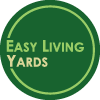

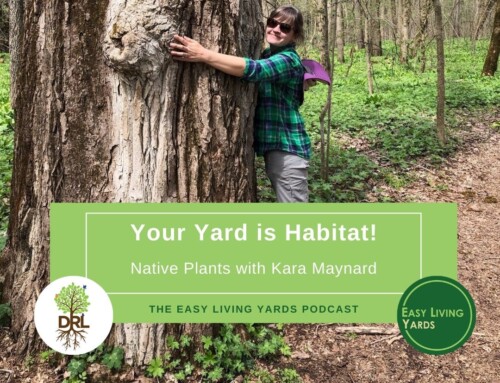
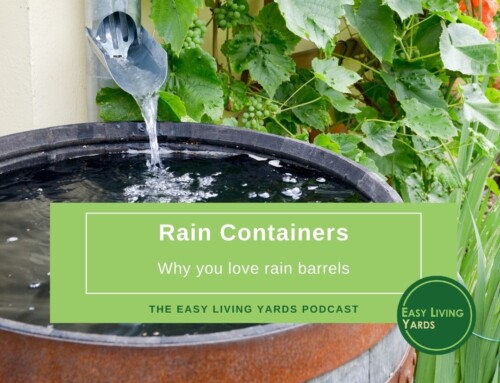
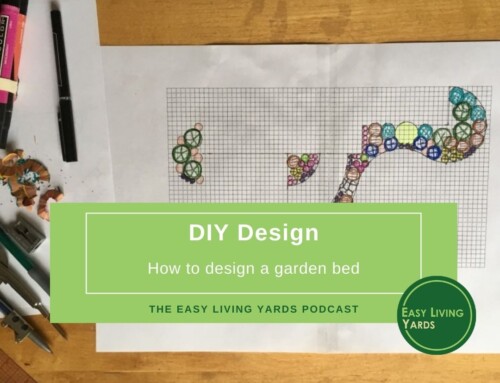

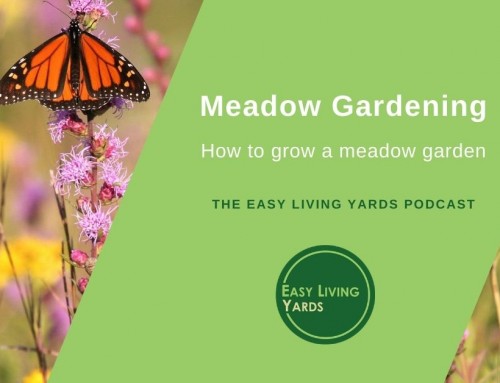
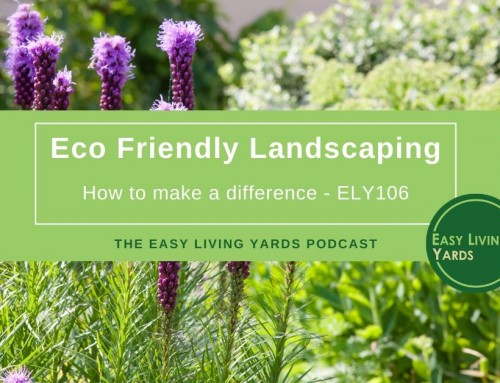
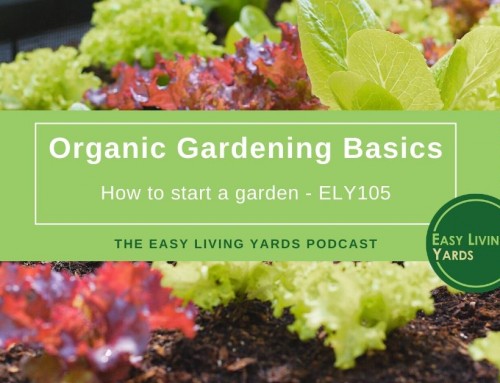
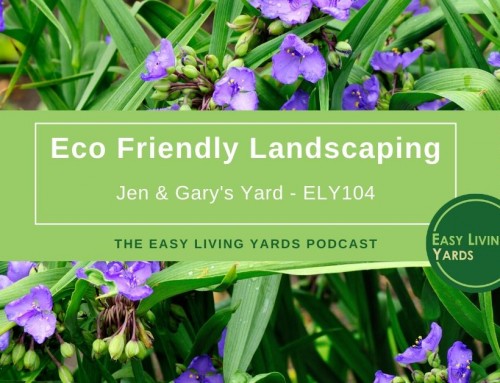

Leave A Comment